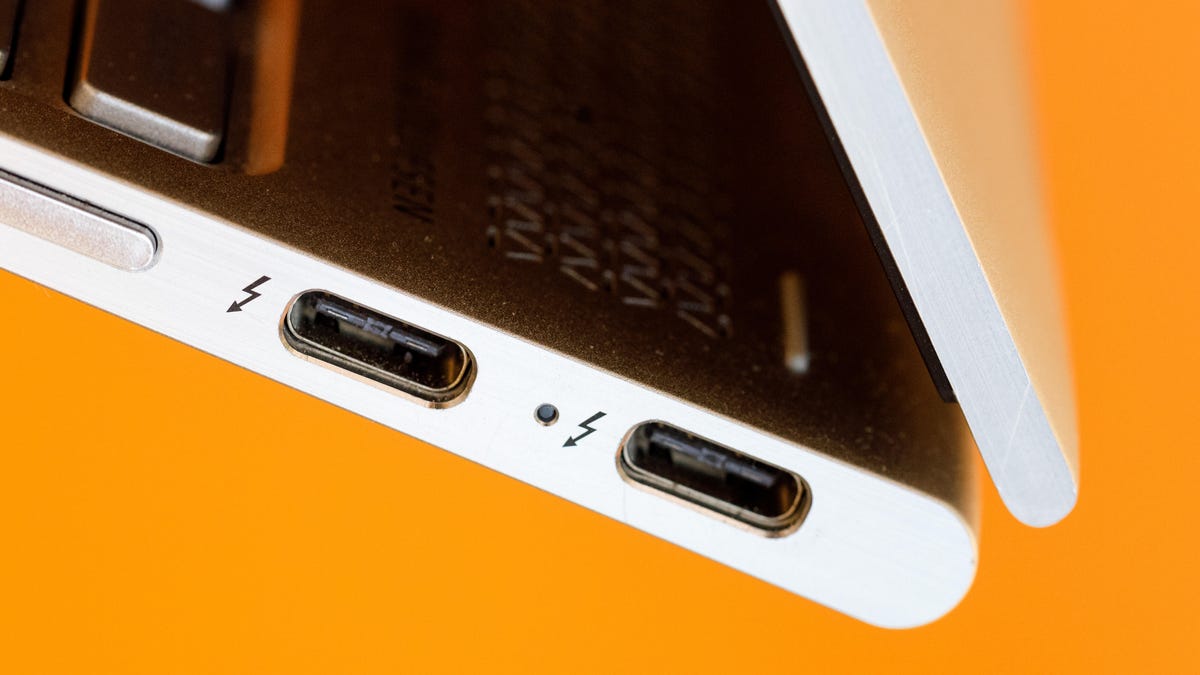USB 3.2 explained: Making sense of current and confusing USB standards
Get to know the different versions of USB 3.2 as you await the arrival of USB 4.

The trade group USB Implementers Forum (USB-IF to those who need another USB acronym) has been busy lately, from announcing the upcoming USB 4 specification to renaming the current USB standard. With the snap of a finger -- OK, a white paper -- USB 3.1 is now USB 3.2.
And if that's not confusing enough, the new USB 3.2 branding also encompasses the older USB 3.0 standard to create a total of three varieties of USB 3.2. And if that's not confusing enough, the USB 3.2 flavors can also be described with a number of "SuperSpeed USB" marketing terms.
USB 4 appears to be straightforward enough: It'll use the USB-C connector and boast transfer speeds of up to 40 gigabits per second, while baking in Thunderbolt goodness. While we await the arrival of USB 4 on some distant, yet-to-be-determined date (late 2020 is the best guess), we're left to sift through the current mess that is USB 3.2. To help you make sense of the USB branding you'll see on current products, let's sort out what's what and how we got here.
Not the first USB name change
This isn't the first time USB names have shifted. USB 1.0, 1.1 and 1.2 were absorbed into USB 2.0. When USB 3.1 showed up, USB 3.0 suddenly became USB 3.1 Gen 1, and the newer standard received the label USB 3.1 Gen 2.
We now find ourselves in a similar spot with USB 3.2. The newest, fastest version of USB 3.2 offers a max speed of 20Gbps and is called USB 3.2 Gen 2x2. (The 2x2 means it's the second generation and has two 10Gbps lanes to achieve its maximum throughput of 20Gbps.) The older USB 3.1 has a single 10Gbps channel and is called USB 3.2 Gen 2. Then there's USB 3.0, which is now called USB 3.2 Gen 1.
Know your USB 3.2 versions
If you're on the lookout for the above USB 3.2 Gen 1 and 2 names when attempting to create the best possible connection between your devices, your work is not done. That's because there are separate marketing terms for each of the three USB 3.2 versions, which the USB-IF encourages vendors to use for their packaging. (Whether vendors follow this suggestion or use the above terms remains to be seen and requires you to know both sets of terms.) The marketing terms you'll see for USB 3.2 devices are: SuperSpeed USB, SuperSpeed USB 10Gbps and SuperSpeed USB 20Gbps.
Perhaps spelling it all out in chart will help alleviate some confusion and your USB branding headache:
USB 3.2 versions
| New name | Old name | Original name | SuperSpeed name | Max speed |
|---|---|---|---|---|
| USB 3.2 Gen 2x2 | N/A | USB 3.2 | SuperSpeed USB 20Gbps | 20Gbps |
| USB 3.2 Gen 2 | USB 3.1 Gen 2 | USB 3.1 | SuperSpeed USB 10Gbps | 10Gbps |
| USB 3.2 Gen 1 | USB 3.1 Gen 1 | USB 3.0 | SuperSpeed USB | 5Gbps |
Type A vs. C
But, wait, there's more! In addition to offering different speeds, USB comes in different physical forms. USB Type-A ports are rectangular and require you to plug in your cable with the right side up. USB Type-C ports are smaller, oval-shaped and reversible in that they save you from needing to know which end is up. (For the record, Type-B ports are the larger, vaguely square-shaped ports you have likely seen on the back of a printer.)
This Harman Kardon speaker doubles as a battery pack. It has both USB-A (center) and USB-C (right) jacks.
All USB 3.2 Gen 2x2 products use the Type-C connector, but not all USB-C ports are USB 3.2 Gen 2x2. A USB-C port can be either 20Gbps USB 3.2 Gen 2x2 or 10Gbps USB 3.2 Gen 2. A USB Type-A port can be 10Gbps USB 3.2 Gen 2, 5Gbps 3.2 Gen 1 or even USB 2.0. USB 4 will clear up this confusion next year, but until then you'll need to read the fine print on products to ensure you're getting the expected USB 3.2 connection between your devices.
One thing you need not worry about is a newer USB product not working with an older device. USB 3.2 devices are backwards compatible with all existing USB products. What you'll sacrifice is throughput; two products with different USB capabilities will operate at the older's transfer speed.
USB PD
No, this is not the police department for the town of USB. USB PD stands for USB Power Delivery and offers a way to charge all manner of devices. What was once a convenient way to charge your phone in a pinch, USB is now designed to charge larger, more powerful devices with larger, more powerful batteries. USB PD can reach up to 100 watts, enough to charge laptops and tablets .
USB PD knows how much power to use for a given device, from the max of 100 watts to charge your laptop to a fraction of that to top off your phone. USB PD is also smart enough to know that when you connect your phone to your laptop, you want the laptop to charge the phone and not the opposite. If you see a product with the USB PD label, then it can act as a universal charger for most if not all of your USB devices.
Read more: Wi-Fi 6 explained

